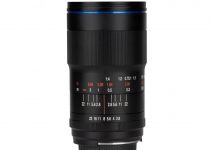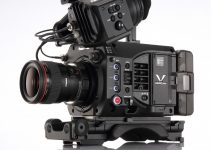Australian audio gear maker Rode has dominated the microphone market for decades, cultivating a massive following of loyal users with the release of appealing products such as their line of video microphones. In the middle of this year, the company announced the successor to the original VideoMic Pro, the VideoMic Pro+ which promises to deliver better sound quality and more convenient features compared to the previous iteration of the product. Even though the price of this microphone remains reasonable from a marketing perspective, in reality, it’s still expensive for some folks.
While Rode guarantees quality across the board with their latest video mic, YouTube filmmaker and tech guru Max Yuryev has come up with another viable option. The catch? This new contender, the Takstar SGC-598, costs a mere $25. So, can a $25 microphone sound better than the industry standard VideoMic Pro+? That’s exactly what we’re going to find out right away.
To start off, let’s first run down the basic features of each microphone. The Rode VideoMic Pro +, on the one hand, has a super-cardioid pickup pattern, meaning that it is primarily designed to pick up sounds from directly in front, on the sides, and behind the unit.
The microphone features a compact design, automatic on/off, multi-step gain control (-10dB, 0dB, +20dB), built-in high pass filter, high-frequency boost, safety channel recording, and a rechargeable battery. The unit interfaces with the camera via the 3.5mm detachable cable.
The Takstar SGC-598, on the other hand, is a more straightforward product. It’s not as compact as the Rode VideoMic Pro+, but it’s still small enough to be carried around easily. In fact, the design is reminiscent of the original Rode VideoMic and even includes a detachable shoe mount that can be moved to different mounting holes on the bottom of the unit.
Furthermore, the Takstar SGC-598 offers a heart-shaped cardioid pattern which picks up sounds directly in front of the camera including sounds that are off-axis. In addition, the unit features a low-cut filter and 0dB/10dB gain control. Just like the VideoMic Pro+, the cheaper counterpart tethers to the camera using a 3.5mm cable, although it’s not detachable.
As far as sound quality goes, the Takstar microphone really stands up to Rode’s offering. Both microphones performed well during the tests conducted by Max indoors and outdoors. As expected, the Rode microphone offers much more presence across the different frequencies, the sound of which video enthusiasts have come to know and love.
The Takstar does a great job in terms of clarity, capturing clear highlights. While the low-end sounds may suffer at times, it shouldn’t be an issue to correct this particular part of the audio spectrum in post with a few subtle EQ tweaks.
Overall, for $25 the Takstar is an absolute no-brainer. Even if you don’t get all the high-end features associated with Rode’s flagship product, the Takstar microphone offers better-than-expected audio quality for a ludicrously low price. So, if you have the money, don’t hesitate to go for the Rode. But if you’re on a budget looking for a low-cost microphone, the Takstar’s SGC-598 should be definitely next on your audio gear list.
[source: Max Yuryev]
Order Links:
Takstar SGC-598 Recording Microphone (Amazon US)
Rode VideoMic Pro Plus On-Camera Shotgun Microphone (B&H, Amazon US)
Disclaimer: As an Amazon Associate partner and participant in B&H and Adorama Affiliate programmes, we earn a small comission from each purchase made through the affiliate links listed above at no additional cost to you.
Claim your copy of DAVINCI RESOLVE - SIMPLIFIED COURSE. Get Instant Access!





